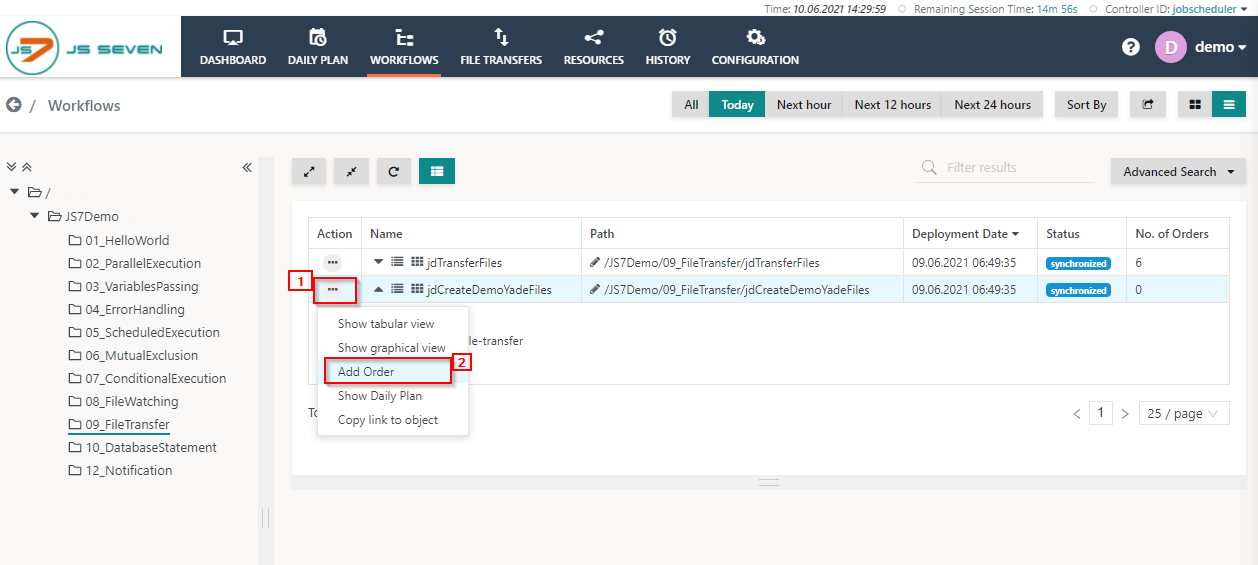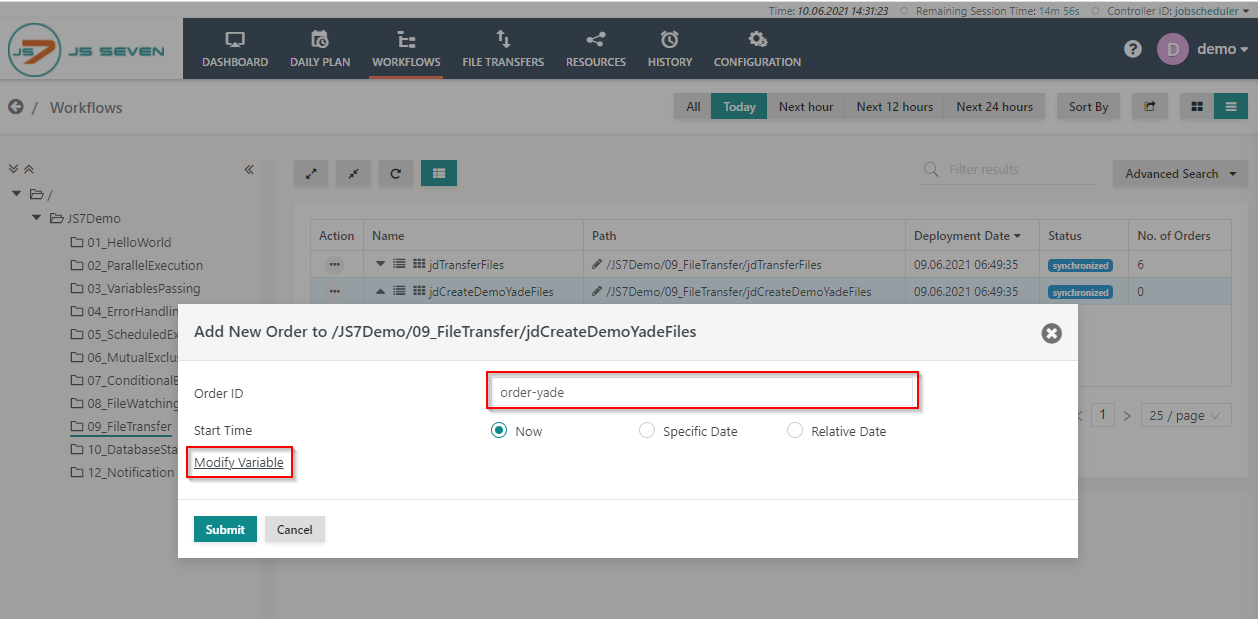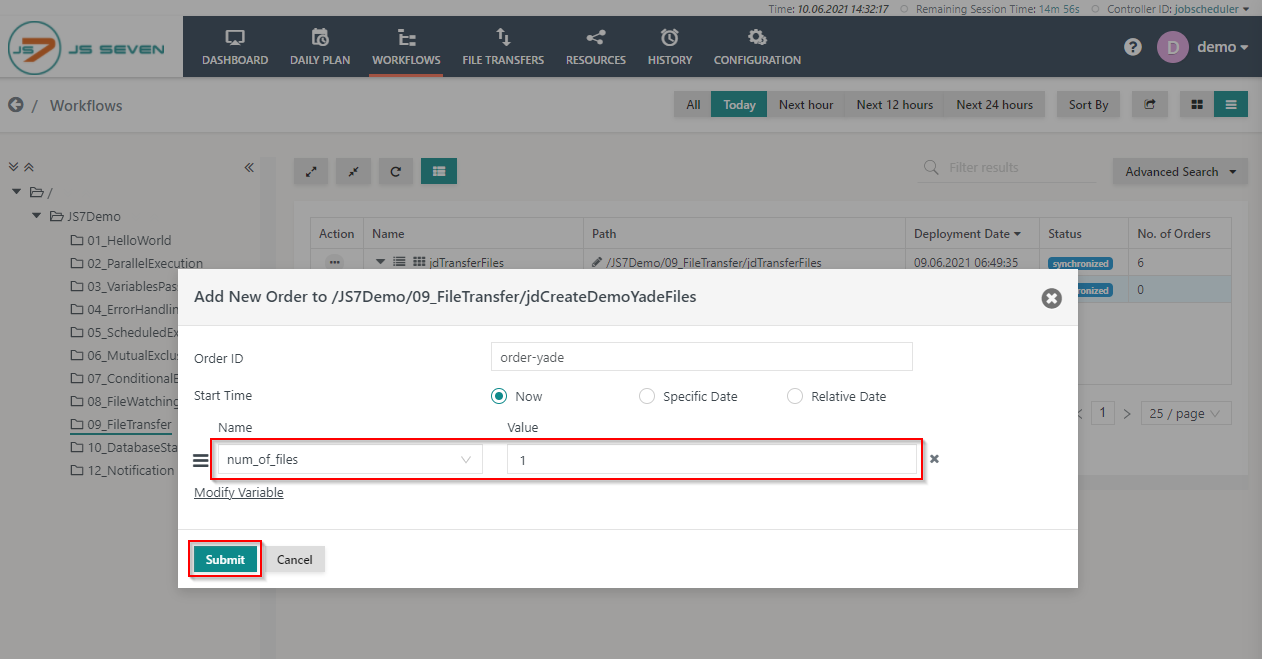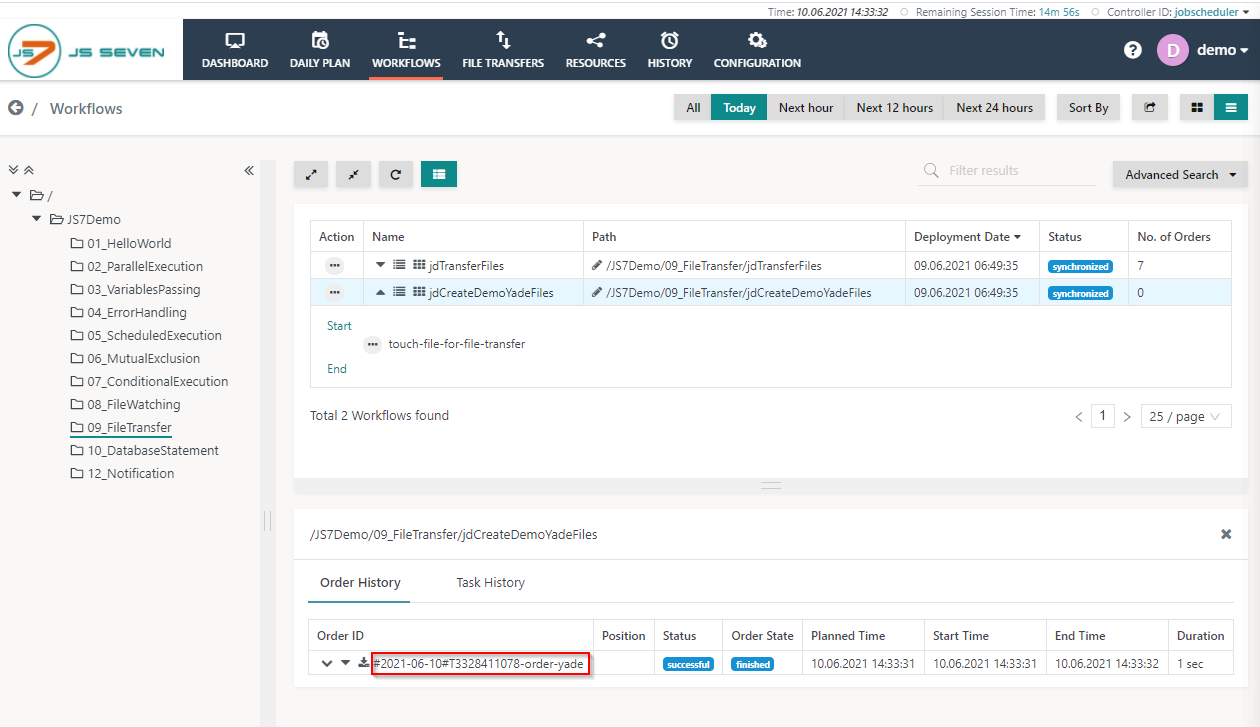Introduction
The JS7 - File Transfer capabilities can be used to transfer files by a number of protocols such as FTP, FTPS, SFTP, WebDAV, HTTP/HTTPS, etc. The JS7 Agent includes the YADE client that is available from the Agent's home directory.
Workflow
The workflow jdCreateDemoYadeFiles includes a shell job that creates files for transfer with the workflow jdTransferFiles. The transfer of files is automatically triggered by JS7 - File Watching:
- Workflow jdCreateDemoYadeFiles creates the files,
- File Watching automatically picks up the files and
- starts the jdTransferFiles workflow by adding one order per file created. This workflow transfers files to an SFTP server.
To execute the workflow from the folder 09_FileTransfer follow the below steps:
- Click the folder 09_FileTransfer and expand the jdCreateDemoYadeFiles workflow.
- Click the action menu of the workflow and use the Add Order menu item from the drop-down menu to add an order to the workflow.
- Click the Add Order action menu item. A popup window will appear.
- You can add an Order ID or leave the Order ID value empty, it will then use a default Order ID. Click the Submit button.
- With the Modify Variable link, you can edit the value of variables assigned to the workflow.
- Click the Modify Variable link and from the drop-down menu and select the name of the variable that you want to modify. In the below screenshot the variable num_of_files is selected with the default value 1. You can modify this value to create 1 to 5 files in the source directory. The variable is declared with the workflow definition, you can modify its value and click the Submit button to add the order to the workflow.
- To check the status of the order click the name of the workflow to make the Order History panel appear.
- From the Order History panel, you can verify if the order is successful and finished. Click the Order ID to see the log output created by jobs executed for this order.
- A log window will open and the order log will be displayed. The order log contains the output of all jobs executed by the order.
- You can download the log file by clicking the Download button from the upper right corner of the log view window. Also, you can expand and collapse the individual job output using the chevron icons from the left upper corner of the log view window.
Overview
Content Tools






